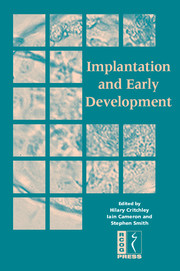Book contents
- Frontmatter
- Contents
- DECLARATION OF INTEREST
- Participants
- Preface
- SECTION 1 PREPARATION FOR IMPLANTATION – THE UTERINE ENVIRONMENT
- SECTION 2 THE EMBRYO
- 9 What makes a good egg?
- 10 What makes ‘good sperm’?
- 11 Morphogenesis of the early mammalian embryo: cell lineage heterogeneity and developmental potential
- 12 Epigenetics in development and cloning by nuclear transfer: alternative approaches to nuclear reprogramming
- 13 Risks associated with assisted reproduction: insights from animal studies
- 14 Pre-implantation genetic testing
- SECTION 3 LESSONS FROM ANIMAL MODELS (TRANSGENICS) AND NOVEL TECHNOLOGIES
- SECTION 4 CLINICAL SEQUELAE
- SECTION 5 CONSENSUS VIEWS
- Index
10 - What makes ‘good sperm’?
from SECTION 2 - THE EMBRYO
Published online by Cambridge University Press: 05 June 2014
- Frontmatter
- Contents
- DECLARATION OF INTEREST
- Participants
- Preface
- SECTION 1 PREPARATION FOR IMPLANTATION – THE UTERINE ENVIRONMENT
- SECTION 2 THE EMBRYO
- 9 What makes a good egg?
- 10 What makes ‘good sperm’?
- 11 Morphogenesis of the early mammalian embryo: cell lineage heterogeneity and developmental potential
- 12 Epigenetics in development and cloning by nuclear transfer: alternative approaches to nuclear reprogramming
- 13 Risks associated with assisted reproduction: insights from animal studies
- 14 Pre-implantation genetic testing
- SECTION 3 LESSONS FROM ANIMAL MODELS (TRANSGENICS) AND NOVEL TECHNOLOGIES
- SECTION 4 CLINICAL SEQUELAE
- SECTION 5 CONSENSUS VIEWS
- Index
Summary
Introduction
Spermatozoa have but one purpose: to deliver the male genome to the egg and fertilise it. In order to achieve this, the fertilising sperm must undergo a number of discrete, sequential and appropriately timed functions that are largely determined by the environment in which fertilising is taking place. These are summarised in Table 10.1. Considering sperm functions in this way shows the functional demands required by the fertilising sperm following an act of coitus at midcycle are, for example, undoubtedly much greater than those for sperm following a simple insemination procedure, such as intrauterine insemination (IUI). In turn, these are generally thought to be more demanding than those required for successful fertilisation by in vitro fertilisation (IVF), with sperm that fertilise following intracytoplasmic sperm injection (ICSI) (where the only requirement is for sperm to have competent DNA capable of successfully decondensing) having the least number of demands placed upon them. Therefore, to be able to define simply what makes ‘good sperm’ is not as straightforward as it first might seem. However, for the purpose of this article, sperm function following unassisted conception will be considered as the starting point from which appropriate references to assisted conception techniques will be made, where relevant.
Keywords
- Type
- Chapter
- Information
- Implantation and Early Development , pp. 119 - 128Publisher: Cambridge University PressPrint publication year: 2005
- 1
- Cited by

